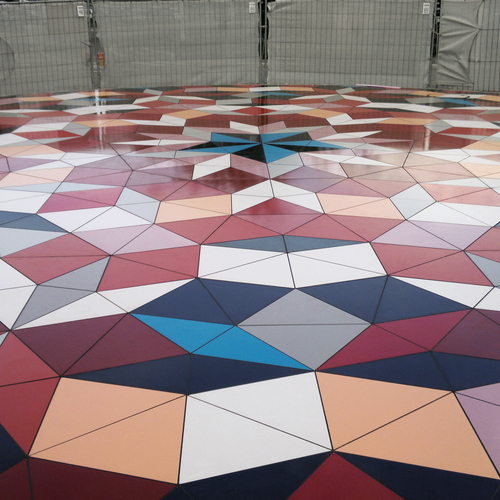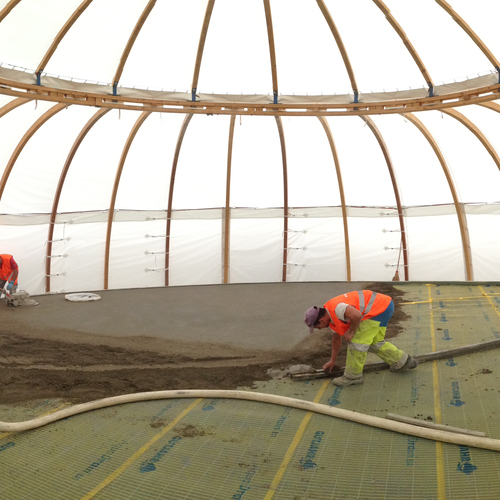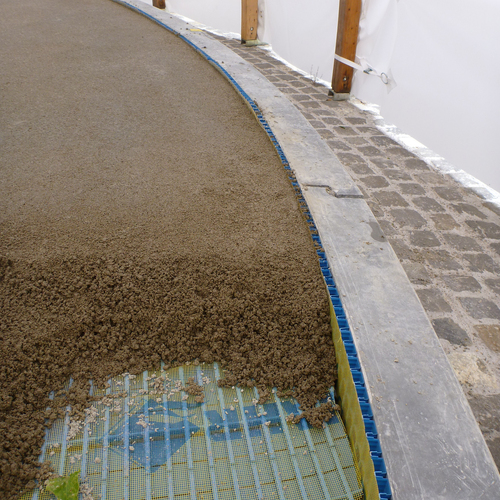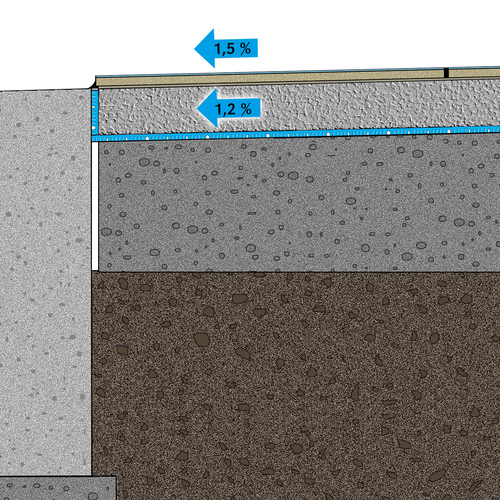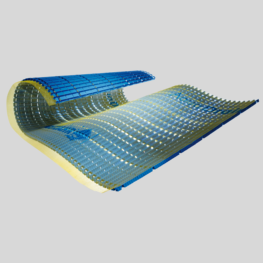Gutjahr drainage protects huge Mandala in front of the Novartis factory
Art isn't just for museums: This was proven by Swiss artist Peter Regli with an extraordinary piece from the "Reality Hacking" series.
He designed a Mandala in front of the Novartis factory in Sankt Johann in Basel consisting of ceramic tiles on a traffic roundabout – a piece which is not just impressive from the air. However, the implementation gave the processing company some major challenges.
12.5 metres in diameter
The Mandala from Peter Regli has an impressive size. It is also in a rather unusual place for a work of art: on a traffic roundabout in front of the Novartis factory. This has turned the classic circle image into a real eye-catcher for both the Novartis employees in the adjacent office buildings and also for car drivers. The artist planned the laying of the 885 ceramic tiles in three different formats in detail, and some of the 11 colours were specially developed by Agrob Buchtal. During the processing it was also a case of providing the the high-quality and individual tiles permanently with long-term protection from damage.
The challenge: many joints – small fall
Because tiles are basically the ideal covering for such a project – provided that the structure is sufficiently drained. This is exactly where the challenge lay for Reglis work of art. The substructure of the Mandalas consists of a rubble supporting layer onto which concrete with a fall had been installed. The whole thing is enclosed in a concrete ring made from six prefabricated elements. The fall was less than the 1.5% required by the SIA standard at 1.2%. There were also 732 metres of joint. Because of this high proportion of joint, an increased amount of seepage water had to be expected. Two other critical points: On the one hand, the drainage mortar could not be laid directly onto the concrete – drainage mortar alone is not anti-capillary, i.e. backwater rises in the mortar and would have led to efflorescence in the joints within a very short time. On the other hand, the drainage must not be visible. Because this would have had a very detrimental effect on the overall impression of the work of art.
Because of these requirements, Gutjahr AquaDrain EK surface drainage was subsequently used for this "artistic" task – for Martin Smid from processing company HESS AG LIESTAL this was the perfect solution. In order to be sure, he asked Gutjahr whether the laying is even possible under these circumstances. The drainage specialist was able to say yes with a good conscience: the AquaDrain EK surface drainage laid beneath the Mandala with a height of 16 mm retains its full functionality, even with an incline of 1.0 %. The important thing was that no puddles of standing water deeper than 12 mm could form.
Quick drainage
Improving the water removal capability by up to 150 times: this is possible with a capillary passive drainage mat beneath the drainage mortar.
The solution: high-performance drainage
AquaDrain EK is a capillary passive surface drainage system for fixed laying of tiles and natural stone in drainage mortar. The system supports the entire covering. Because of this, the drainage channels form a defined cavity of more than 90 percent, so that water can drain away quickly and effectively. At the same time, backwater on the waterproofing no longer flows back into the covering structure. Because of the back ventilation the entire structure dries more quickly. Another special feature of this innovative system is the mesh, which remains permanently water-permeable and is the only one with a tested long-term suitability certificate. This means that it does not clog because of the soluble lime in the drainage mortar.
Flexible drainage system makes covered drainage possible
Normally, the system is used on balconies or terraces. However, installation beneath the Mandala of Peter Regli shows how flexible AquaDrain EK is. In order to ensure that concealed drainage took place, a concrete slab was first installed at a distance of about 16 mm from the concrete ring. HESS AG LIESTAL laid the AquaDrain EK mat on top of this over the entire surface. The drainage mat was also inserted vertically between the drainage mortar and the concrete ring. This makes fast vertical drainage into the supporting rubble layer possible.
Gutjahr has given specialist companies extended guarantees on its drainage system for more than 20 years. In the case of Peter Regli's mandala, the drainage specialist also provides a system guarantee together with construction chemical manufacturer Mapei, who supplied the drainage mortar, the adhesive and the grout. This means that both companies vouch for the functionality of the complete structure together.
About Peter Regli
Artist Peter Regli was born in 1959 in Andermatt (Switzerland), and lives in Switzerland and the USA. He studied at Zurich University of the Arts, and already had exhibitions in Switzerland and numerous other countries. He became known due to his interventions in the public sector. Under the generic term of "Reality Hacking" he uses landscapes and everyday objects to turn reality on its head. The Mandala on the traffic roundabout in Basel is project number 287.
Products used
Similar project reports
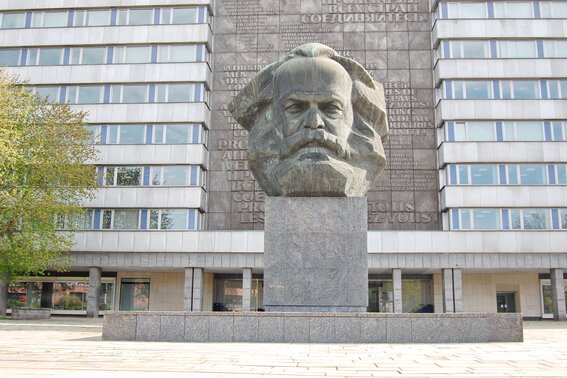
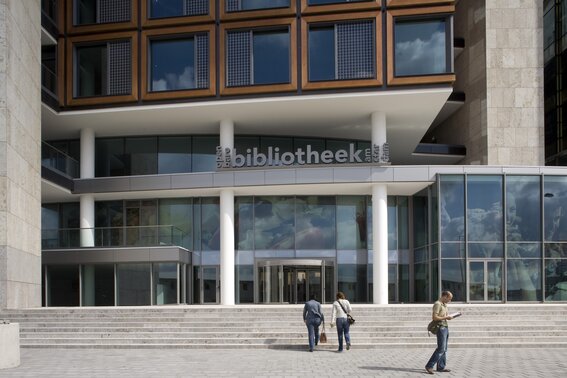
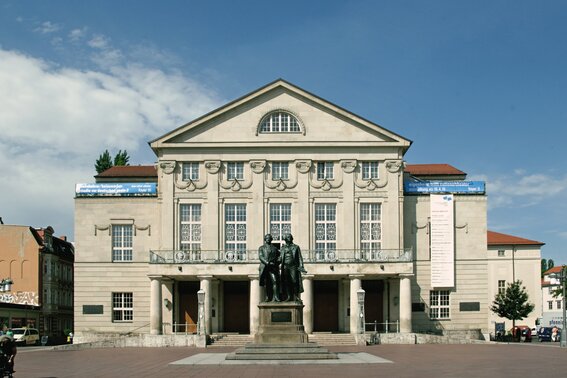
![[TRL] Gutjahr Systemtechnik GmbH - Komplettsysteme für den Außen- und Innenbereich](/build/images/gutjahr-logo.d62773db.svg)


